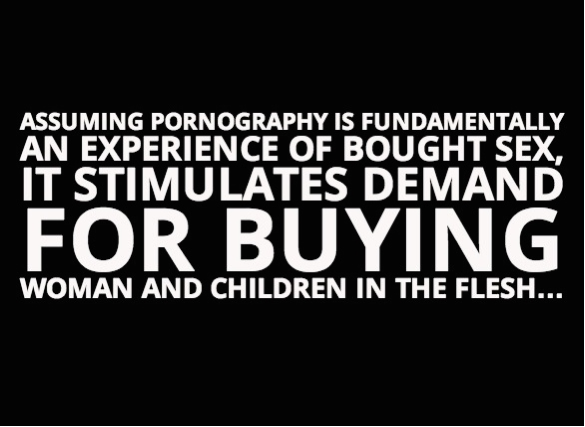Does pornography drive demand for sex trafficking?

The relationship between pornography and sex trafficking continues to be a controversial topic. As we have addressed previously at HTS, there is evidence linking pornography to the supply side of sex trafficking: pornography is used to train sex trafficking victims, perpetrators make pornographic videos of their victims in order to further control/blackmail them, and perpetrators force victims into pornography in order to maximize the financial gain they receive from each victim. But there are also arguments that pornography contributes to the demand side of sex trafficking as well: Does pornography make men more likely to see women as objects and thus more likely to procure a prostitute or sex trafficking victim?
Several studies have found a correlation between pornography consumption and procurement of prostitutes. For example, a 2013 analysis of survey data on U.S. males and pornography spanning from 1973 to 2010 found pornography use to be associated with paid sex behavior. The study analyzed the interviews of 14,193 U.S. males who responded to questions about their pornography consumption and found: “Pornography consumption was positively associated with having multiple partners and engaging in paid sex behavior, even after controlling for age, ethinicity, education, and religiosity.” In 2005 Captive Daughter and the International Human Rights Law Institute at DePaul University held a conference called “Demand Dynamics: Pornography Driving the Demand in International Sex Trafficking.” One of the concluding thoughts from the conference stated:
Pornography creates demand for prostitution and also, trafficking, through its consumption. Assuming pornography is fundamentally an experience of bought sex, it stimulates demand for buying woman and children in the flesh…
As the demand for prostitution increases, so does the number of women and children trafficked into the industry. For example, the increased population and international presence in the Balkans after 1990 as a result of regional wars led to an increase in the demand for sex services within the Balkans and an increase of the trafficking of women and children trafficked into countries such as Kosovo. As demand exceeds supply in the sex industry, traffickers start to kidnap women and girls and force them into the commercial sex industry. The increased demand means that the price per sex worker is higher, incentivizing trafficking.
However, as stated above, the idea that pornography contributes to the demand for sex trafficking is still a highly contested one. Many argue that there is no correlation between pornography use and paid sex. Famously, in 1970 the President’s Commission on Obscenity and Pornography found no association between the viewing of pornography and criminal behavior or adverse “character or moral attitudes regarding sex and sexual conduct.” Some argue that regardless of any correlation, legislation or regulations of pornography use the guise of protecting women, while really being concerned with issues of morality and “appropriate” expressions of sexuality.
What do you think? Is pornography contributing to the demand for sex trafficking? If it is, should pornography be regulated?
